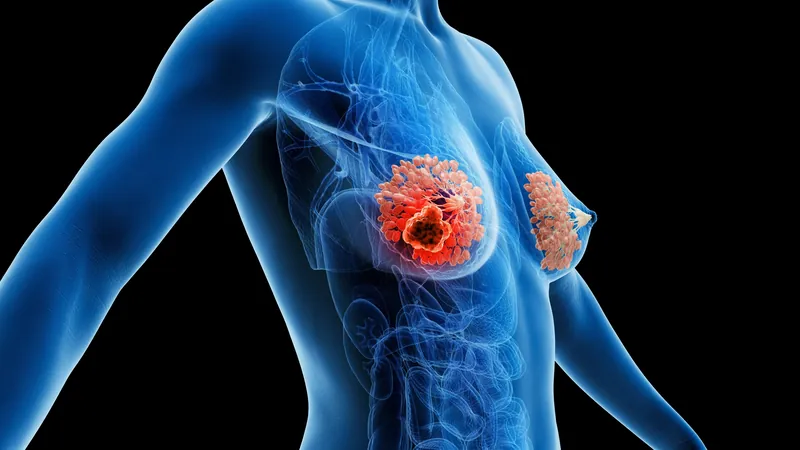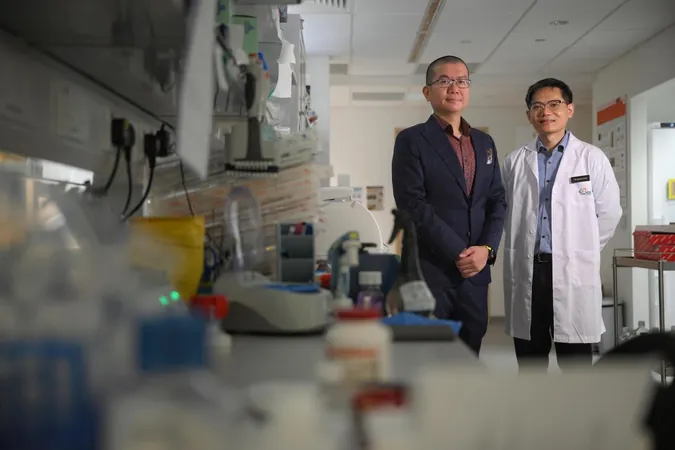
Revolutionary Breakthrough: New Study Unveils Key Behaviors of Breast Cancer Cells Linked to Bone Metastasis Risk
2024-11-05
Author: Siti
A groundbreaking study published in PLoS ONE has revealed that specific behaviors of breast cancer cells can be instrumental in predicting their risk of spreading to bone, a devastating complication that contributes to the high mortality rate of the disease. Researchers have developed an innovative in vitro cancer model that simulates the complexities of a bone microenvironment, paving the way for more effective preclinical tools in understanding and forecasting breast cancer bone metastasis.
With an estimated 2.3 million new breast cancer cases and approximately 700,000 deaths annually, the urgency for advancements in treatment and early detection cannot be overstated. Although around 80% of patients with primary breast cancer can be cured with prompt treatment, the challenge remains that many patients are diagnosed only after the cancer has already metastasized. Metastatic breast cancer is particularly lethal, accounting for more than 90% of cancer-related deaths.
Traditional in vitro models have struggled to replicate how breast cancer spreads to secondary organs, including bone, lungs, liver, and brain. In an attempt to fill this gap, scientists created a cutting-edge model using invasion/chemotaxis (IC) and extravasation (EX) chip platforms. These platforms mimic a bone-like cellular environment comprising cell lines such as osteoblasts, stromal cells, and monocytes, all embedded in a three-dimensional collagen I-based extracellular matrix.
By employing the IC and EX chips, researchers visualized and quantified the invasion and extravasation potentials of the MDA-MB-231 metastatic breast cancer cell line toward lung, liver, and breast microenvironments. They also tested variants of this cell line, notably LM2 and BoM 1833, which preferentially metastasize to the lung and bone, respectively, in mouse models. Their findings indicate a strong correlation between the invasive behavior exhibited in these models and the actual in vivo behavior seen in living organisms.
“Breast cancer frequently spreads to bone, occurring in an estimated 53% of cases, leading to severe consequences such as pain and pathological fractures,” remarked Burcu Firatligil-Yildirir, a postdoctoral researcher. “Our research provides a foundational model to gauge the likelihood and mechanisms behind bone metastasis in living systems, enhancing our understanding of the underlying molecular mechanisms and guiding the development of preclinical tools for predicting metastasis risks.”
Moreover, the study showcased that collagen I is particularly effective in simulating a bone-like environment, and that changes in stiffness can regulate the invasiveness of breast cancer cells. Remarkably, after just five days of observation, cells were found to increase the stiffness of the associated matrices to as high as 1200 Pa, indicating that cellular interactions have a profound impact on the matrix’s mechanical properties, thus influencing cancer cell behavior.
This research opens up new avenues for investigating the molecular underpinnings of breast cancer bone metastasis. It highlights the multidisciplinary challenge of creating sustainable in vitro models that accurately reflect the complex nature of both breast and bone microenvironments.
“By integrating cancer biology, microfluidics, and soft materials, we can create physiologically relevant models that pave the way for predictive diagnostics and treatment strategies,” Nonappa, associate professor and leader of the Precision Nanomaterials Group, explained.
As researchers continue to refine these groundbreaking platforms, the prospect of more personalized and effective treatments for breast cancer patients seems increasingly within reach—potentially transforming the landscape of cancer care altogether.



 Brasil (PT)
Brasil (PT)
 Canada (EN)
Canada (EN)
 Chile (ES)
Chile (ES)
 Česko (CS)
Česko (CS)
 대한민국 (KO)
대한민국 (KO)
 España (ES)
España (ES)
 France (FR)
France (FR)
 Hong Kong (EN)
Hong Kong (EN)
 Italia (IT)
Italia (IT)
 日本 (JA)
日本 (JA)
 Magyarország (HU)
Magyarország (HU)
 Norge (NO)
Norge (NO)
 Polska (PL)
Polska (PL)
 Schweiz (DE)
Schweiz (DE)
 Singapore (EN)
Singapore (EN)
 Sverige (SV)
Sverige (SV)
 Suomi (FI)
Suomi (FI)
 Türkiye (TR)
Türkiye (TR)
 الإمارات العربية المتحدة (AR)
الإمارات العربية المتحدة (AR)